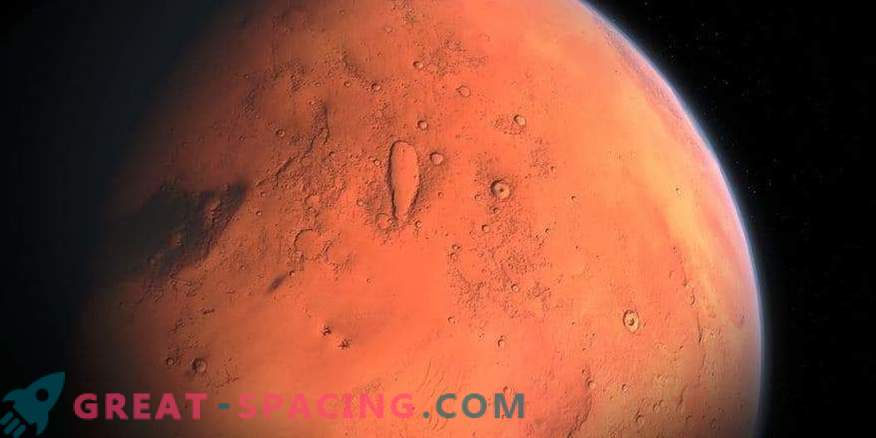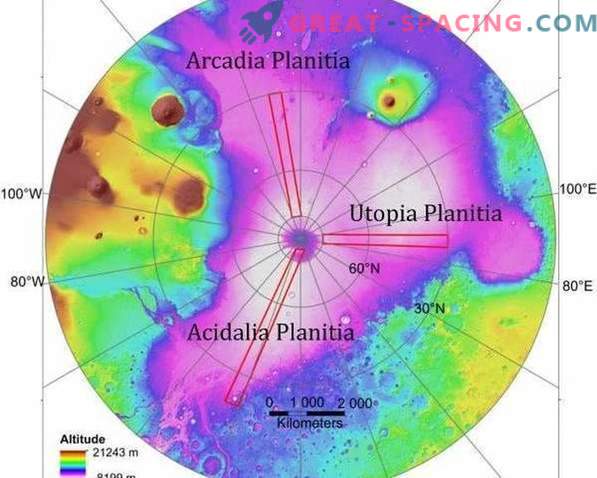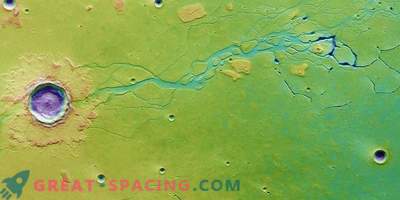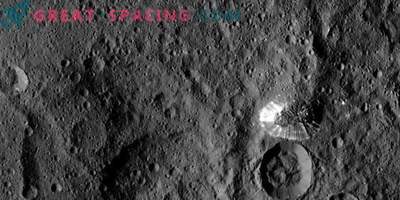
A new research method displayed a wide distribution of ice formations on Mars. This large-scale survey allows in the future to study in more detail the young deposits of ice and sediments in the northern polar basin.
Young ice deposits are extremely important. First of all, they reflect the different epochs of the Martian climate history, when the ice remained stable at middle latitudes. They can be explored to collect additional climate data. In addition, sooner or later, people will arrive on Mars to explore the planet. They will want to head to the middle latitudes, where the sun shines all year round. The presence of ice will more accurately determine the place for a relatively comfortable life.

Localization of the studied areas on the northern plains of the Red Planet
The northern plains of Mars consist of several basins filled with sediments. It is believed that in this area the ancient ocean was located, and now ice can be found on the territory, even in those latitudes where it is considered unstable. However, the exact origin of ice is unknown, and whether there is a connection with the ancient ocean or recent glaciations. There is also no information about the age of various surfaces and landforms. Improving the geological context of the northern plains will help limit unresolved questions about climate evolution and the geology of the Red Planet. The team broke the long sections of the planet into squares 20 x 20 km. If there were matches (identification of the type of material), the cell was checked more carefully. This accelerated the process of interpreting vast areas. The advantage is that it is now possible to track the latitudinal location of various objects in a spatial context, which is useful for conclusions about Martian ground ice.
For the analysis, data from the SHARAD instrument on the MRO orbiter were used. Scientists compared the morphology of the surface, comparing with hundreds of observations of the device to search for subsurface reflection. This allowed not only to identify the exact areas, but also to measure the thickness of the ice.











































